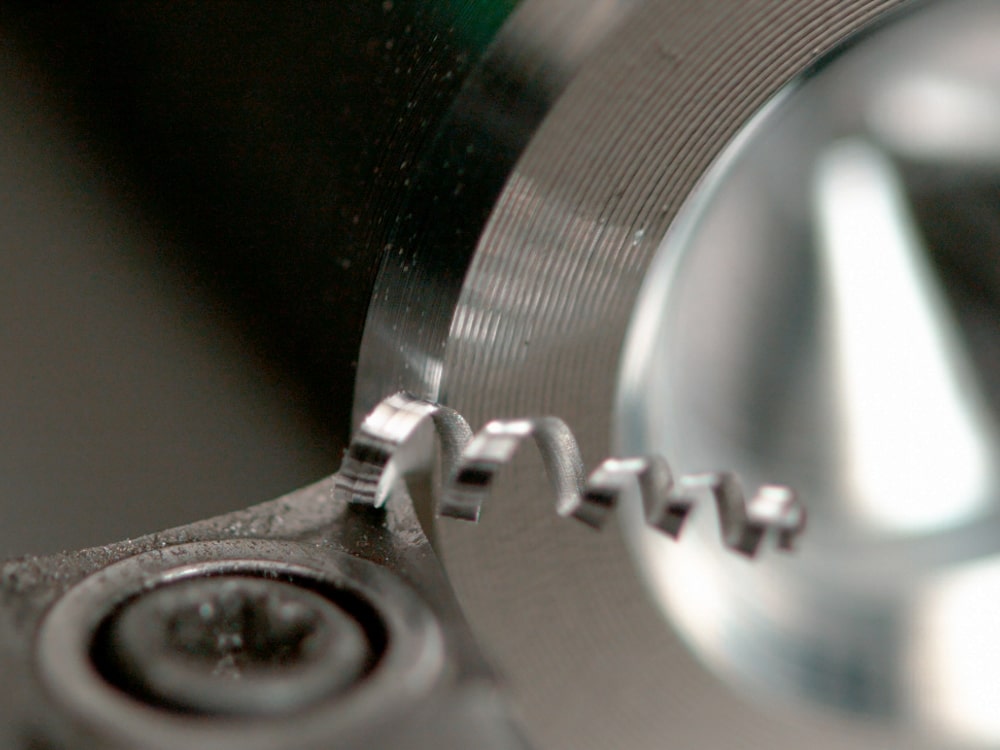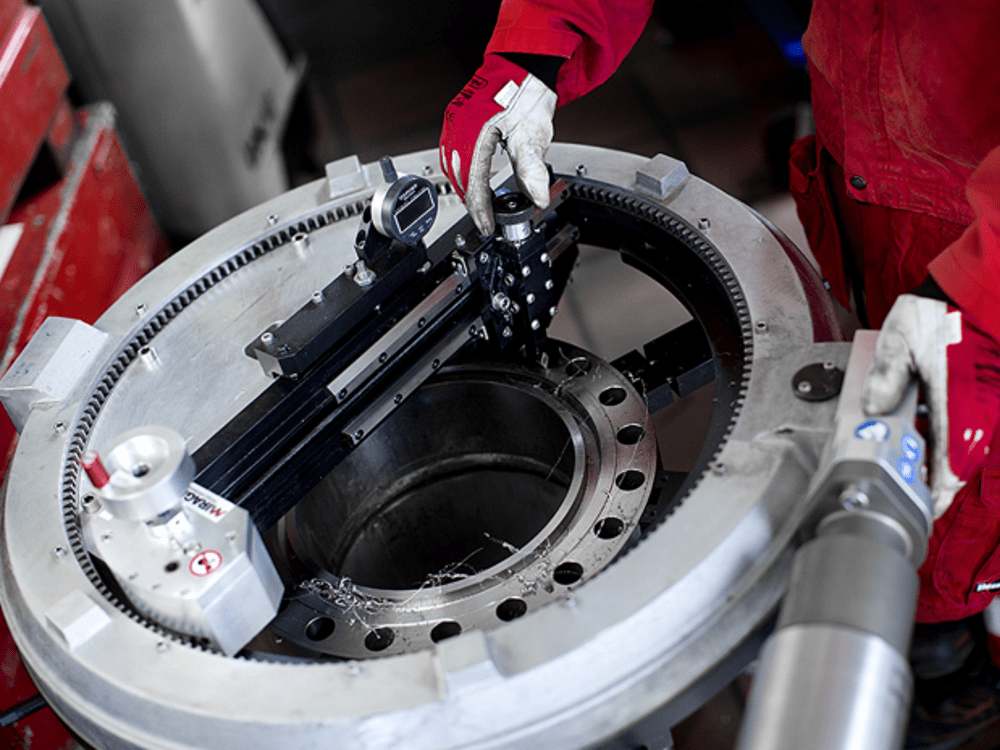Using a Flange Facing Machine to Refurbish a Shell and Tube Heat Exchanger
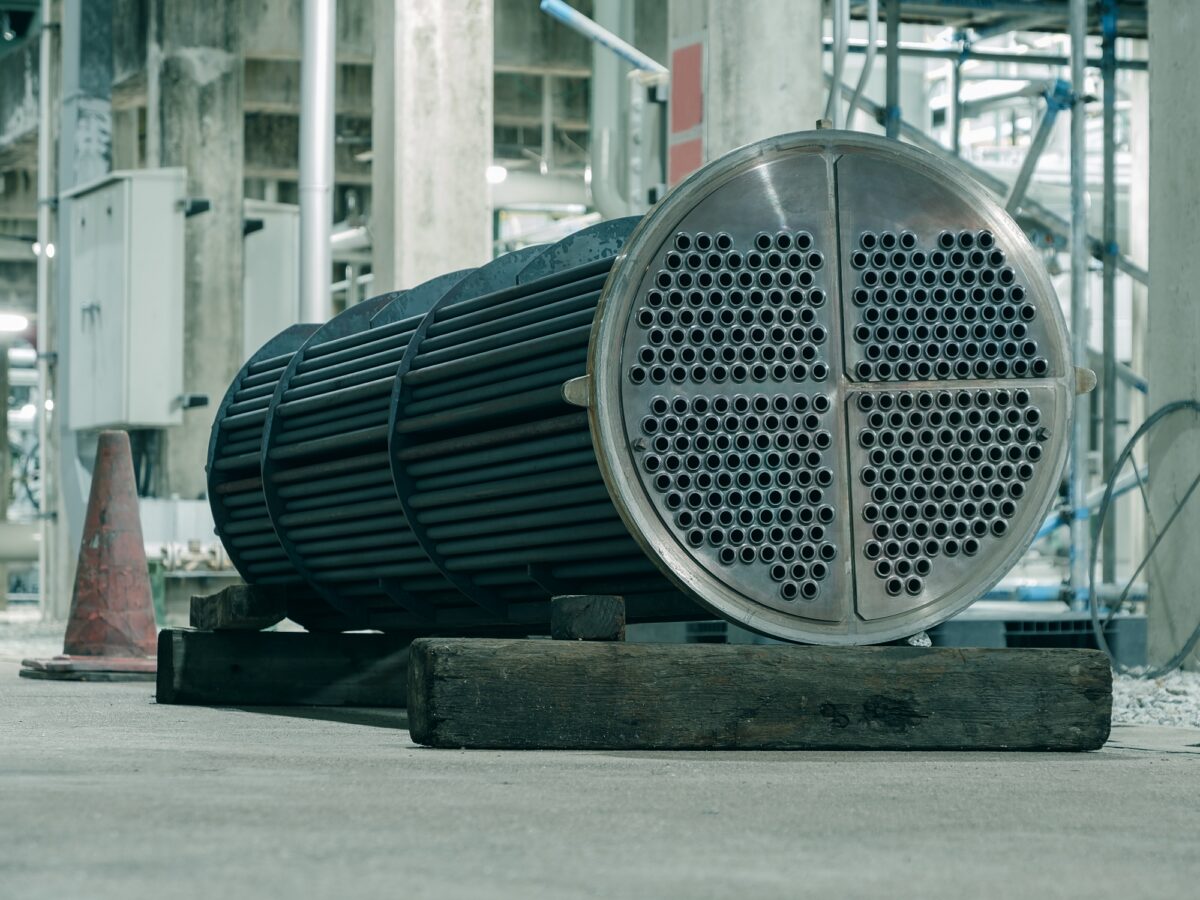
January 5, 2021
0
When the time comes to refurbish a shell and tube heat exchanger, a flange facing machine is a must-have machine tool.
But what exactly are shell and tube heat exchangers, and why do they need regular maintenance?
Shell and tube heat exchangers are one of the many kinds used within industrial processing systems. They’re designed for high-pressure applications – such as those in oil refineries and chemical processing systems. But the temperatures and substances they endure mean they’re prone to corrosion and a build-up of minerals.
The result is less efficient heat transfer, contamination, and in extreme cases, the escape of noxious gases. That’s why a preventative maintenance program is essential.
So how are shell and tube heat exchangers refurbished?
Commonly there’s 3 steps;
- Step 1: Cleaning
- Step 2: Machine new sealing surfaces on the heat exchanger flanges
- Step 3: Machine a new sealing surface on the division slots
Cleaning
Put simply, the cleaning process involves removing corrosion and mineral deposits. This is normally achieved using a combination of rodding, hydro blasting and descaler.
Cleaning methods for shell and tube heat exchangers could be explained in great detail in a separate article. But for now let’s focus on machining.
Machining Heat Exchanger Flanges
Following cleaning, it’s important to make sure the sealing faces on the end plate on the tube bundle are in good condition. Any evidence of corrosion, pitting, scratches or distortion will compromise the integrity of the flange joint. To prevent this from happening, the front and back sealing faces on the flange should be machined back to base metal.
A flange facing machine can be used to create a spiral serrated finish to ASME specifications.
Flange Facing Machines for Heat Exchangers
Flange facing machines are available in many different sizes. They’re mostly used for machining flanges on pipework in the oil & gas, and petrochemicals industries. But larger models are also used for machining heat exchanger flanges.
Two different configurations exist; internal mount and external mount.
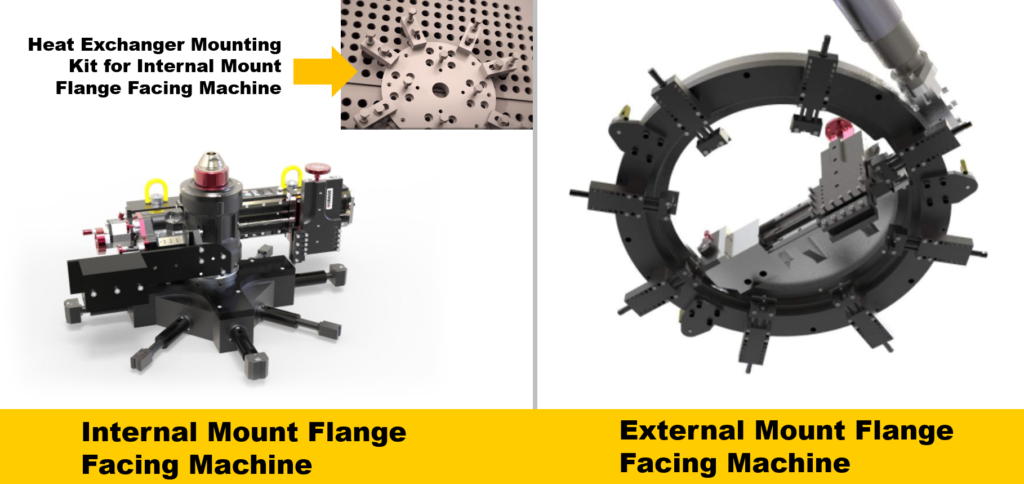
Internal Mount Flange Facing Machines
An internally mounted flange facer mounts inside the flange bore.
So how can they be fixed to the end of a heat exchanger?
The answer is to use a heat exchanger mounting kit. These kits work using bolts and expanding toggles that fit inside the heat exchanger tubes. But despite this method being tried and tested over many years, for some people there’s a reluctance to do it this way. This is because of the ‘perceived’ risk of damage to the inside of the tubes.
These concerns can be avoided using an external mount flange facing machine.
External Mount Flange Facing Machines
This type of flange facer clamps onto the outside of the flange diameter using adjustable jaws (legs). Sizes vary, with small machines designed for mounting onto 200mm (8”) diameter flanges, and the larger models for diameters of up to 2000mm (80”).
Mirage/Enerpac External Mount Flange Facing Machines.
New to the market in 2020 is a new range of externally mounted flange facing machines. These are designed primarily for machining heat exchanger flanges from 760mm diameter through to 2000mm.
Machining Division Slots
The end plate on some heat exchangers includes slots. Their purpose is to seal against a metal plate separating the interior into different chambers. Division slots are also prone to corrosion and may also need machining back to base metal. You should do this using a milling rail such as a LMR2000 portable milling machine mounted onto a gantry frame. The pictures below show examples of milling rails in-situ.
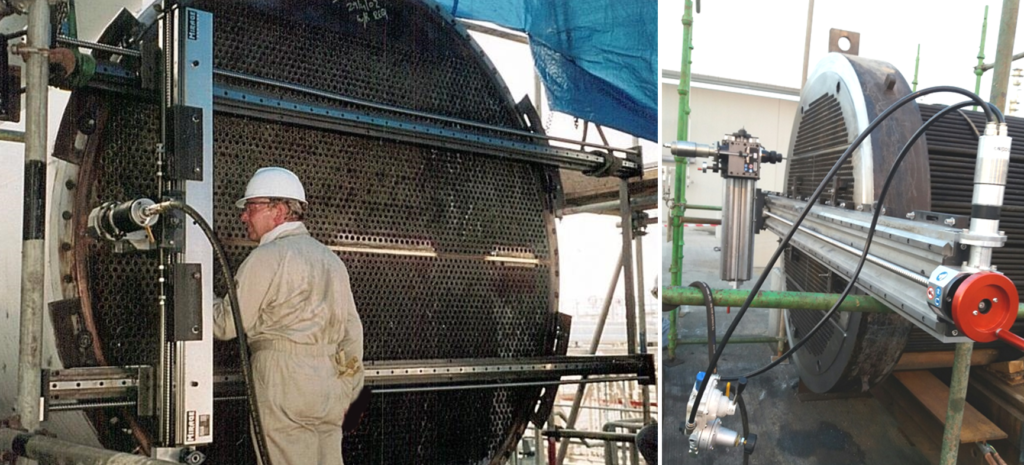
New Mirage/Enerpac Flange Facing Machines include a handy innovative feature that allows the user to switch from a facing to a milling operation. With the main machine body still mounted to the flange, the facing arm can be quickly replaced with a milling rail. Consequently, this avoids the no need to disassemble the flange facing machine, and then construct a gantry around the heat exchanger!

Watch the video to learn more about the new product range


